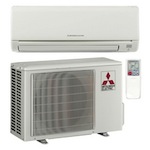Not too hard … You can significantly reduce swimming pool heating costs by installing a solar pool heater. They’re cost competitive with both gas and heat pump pool heaters, and they have very low annual operating costs. Actually, solar pool heating is the most cost-effective use of solar energy in many climates and is very popular in Northern California.
Solar pool heating systems include the following components:
- A solar collector – the panel that pool water is circulated thru to be sun heated
- A filter – removes debris before water is pumped through the collector
- A pump – circulates water through the filter and collector and back to the pool
- A flow control valve – automatic or manual device that diverts pool water through the solar collector.
Pool water is pumped through the filter and then through the solar collector(s), where it is heated before it is returned to the pool. Some systems include sensors and an automatic or manual valve to divert water through the collector(s) when the collector temperature is sufficiently greater than the pool temperature. When the collector temperature is similar to the pool temperature, filtered water simply bypasses the collector(s) and is returned to the pool.
Solar pool collectors are made out of different materials. The type you’ll need depends on your climate and how you intend to use the collector. If you’ll only be using your pool when temperatures are above freezing, then you’ll probably only need an unglazed collector system. Unglazed collectors don’t include a glass covering (glazing). They are generally made of heavy-duty rubber or plastic treated with an ultraviolet (UV) light inhibitor to extend the life of the panels. Because of their inexpensive parts and simple design, unglazed collectors are usually less expensive than glazed collectors. Even if you have to shut the system down during cold weather, unglazed collectors may be more cost effective than installing a more expensive glazed collector system.
Glazed collector systems are generally made of copper tubing on an aluminum plate with an iron-tempered glass covering, which increases their cost. In colder weather, glazed collector systems—with heat exchangers and transfer fluids—capture solar heat more efficiently than unglazed systems. Therefore, often they can be used year-round. These systems are not typical around here; they cost more and do the same job.
Selecting a Solar Pool Heater
A solar pool heating system usually costs between $3,000 and $6,000 to buy and install. This provides a payback of between 1.5 and 6 years, depending on your pool size and local fuel costs. These systems last longer than gas and heat pump heaters. Your actual cost and payback depend on many factors. Before you purchase and install a solar pool heating system, you should evaluate your needs through your supplier, get a pro to size your pool to determine the best system (brand and number of solar collectors). We will help if desired.
Installation and Maintenance
Proper installation of a solar pool heating system depends on many factors. These factors include solar resource, climate, local building code requirements, and safety issues. Therefore, it’s best to have a solar pro install your system.
After installation, properly maintaining your system will keep it running smoothly for 10-20 years. Consult a professional and read your owner’s manual for maintenance requirements. Your collector should require little maintenance if the pool’s chemical balance and filtering system are checked regularly. These systems are popular because they work great and extent the swimming season by two to three months per year. Instead of gas, the sun is used to heat water, saving you an additional 75 or more dollars per month.
Glenn Forslin is President of Automation Solar, a solar cosulting and installation company for residential and commercial applications.








